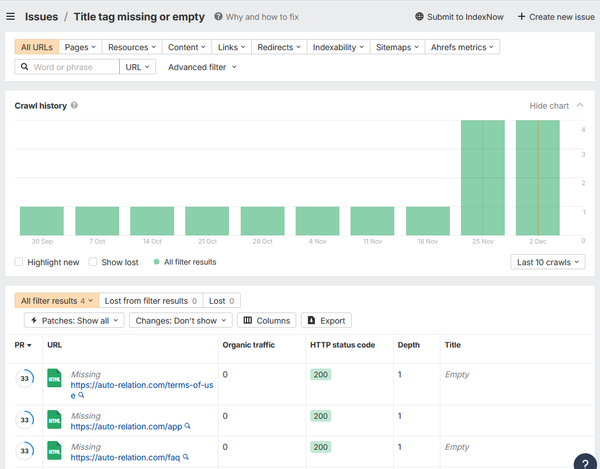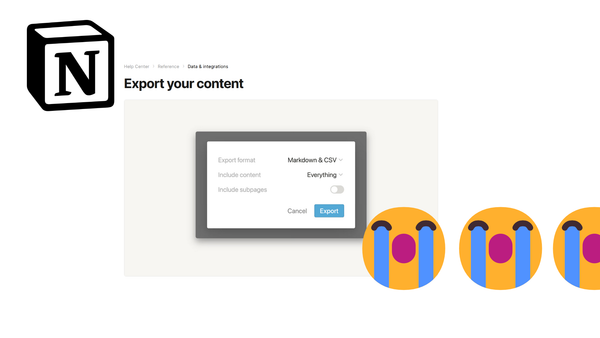Fine-Tune an AI Auto Relation for Notion
Explains all advanced configuration options available for AI Auto Relation for improving matching accuracy.
After you have created an Auto Relation with AI Auto Relation, you can edit the relation to fine-tune it in order to get more accurate matching results.
For this, simply head to the AI Auto Relation dashboard, click on the relation you want to edit, and then click on the [Edit] button.

Once you have started editing your relation, you can change both the basic configuration as well as some more advanced configuration options.
I'll explain each configuration option in the following:
Basic Configuration
The first basic setting we can change is whether the database is Active of not. If you change the State of your database to Disabled, AI Auto Relation will not update the relation in your database anymore.
This can be useful if you plan to make a number of changes to your Target Database in short succession. Simply put the database to Disabled before you start making your changes and flip it back to Active after you are done. This can be useful to save AI credits!
The second basic configuration item we can change is the Source Database selected.
You can change the Source Database by clicking on the currently selected database.
You can either scroll through the databases in the pop up dialog or search for your database by name:

If your database does not show up here, make sure you have shared it with the integration (see How to Share a Notion Page with a Connection/Integration).
Next, select the target database in the same way.
After you have selected the target database, and there is no relation property defined already, the Create Relation Property button becomes available:

Click the button and provide whichever name you like for the new relation property, and click Create:

Note: If you cannot see the Create Relation Property button but see the name of a property instead, well done! You already have a relation property that AI Auto Relation can use. If you don't want to use that property, you can create another one in Notion and then select whichever property you like. Beware that if you choose to use an existing property rather than create a new one, AI Auto Relation will overwrite all values in that property when you enable it.
Additional Configuration
We don't always need to change the following fields, and it's usually fine just leaving them at their defaults.
For this article though, I will go through each of them in detail.
Additional AI Instructions
In this section you can provide additional instructions the AI should keep in mind when determining which pages from the source and target databases are related.
You don't usually need to change anything under here as it works fine with the defaults.

If you do want to change it, I recommend keeping this as simple as possible, so we don't confuse the AI!
For instance, if you are only interested in having a maximum of one page from the target database linked to each entry of the source database, you could change the Number of Matches as follows:
- Number of Matches Desired: 0-1Source Database Content & Target Database Content
You can also fine-tune what data the AI looks at to determine if a page is related to another page. Specifically, you can choose between All content, Page content, No content (only title) and Value of specific property.

(1) All content includes all block content and database properties. Please note AI Auto Relation only considers the first 2,000 characters in the page content. This is to keep usage of AI credits low, since the more characters we process, the more credits get used.
(2) Page content (blocks) refers to all the main content of a Notion page.
(3) No content (only title) will ignore all content and properties with the exception of the title property.
(4) Value of specific property refers to the contents of a specific database property.
Note: We never need to select the Title property for a database, since that is always included in the AI analysis.
AI Model
You can choose the AI Model that AI Auto Relation will use to determine if pages are related.

I recommend to use either the GPT-4.1 or GPT-4.1 mini model.
The default model for new relation is GPT 4.1 mini.
Processing Limits
Lastly, you've got the Processing Limits setting. This is important to keep our AI usage in check.
For instance, if you have a source database with 2,000 pages, and make only 1 change to your target database, we naively may need to re-check all 2,000 pages.
That quickly adds up!
Thus, AI Auto Relation uses a vector database to pre-filter which pages we will re-check, and it will limit the total number of pages to re-check for any one target database change to the limit defined here.

You can bump this up to 1,000 - but beware this may quickly chew through your credits. If you have any concerns about your AI credit usage, don't hesitate to reach out!
Once you are satisfied with your changed configuration, click the [Update] button at the bottom of the dialogue.
Note that after you change the configuration for an Auto Relation, AI Auto Relation will re-scan ALL pages in your source database.
That can take a while!
If you plan to make a number of changes to a database, be welcome to to switch it state to Disabled before you start making the changes. Then switch back to Active when you are done, and AI Auto Relation will consider all changes you have made in the meanwhile when re-scanning the database.





